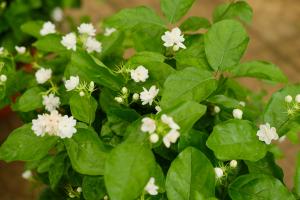Why Did Abraham Plant a Tamarisk Tree?
Abraham is a key figure in the Bible, revered by Jews, Christians, and Muslims alike. He is known for his unwavering faith in God, his hospitality, and his foresight. One of the lesser-known details about Abraham is that he planted a tamarisk tree at Beersheba. In this article, we will explore the significance of this act.
A Brief History of Beersheba
Beersheba is an ancient city located in southern Israel. It was an important city in biblical times, and its name is mentioned several times in the Bible. Beersheba is particularly associated with Abraham, as it is the place where he settled with his wife Sarah and their son Isaac. It was here that Abraham dug a well and made a covenant with Abimelech, the king of Gerar.
The Significance of Trees in the Bible
Trees play an important role in the Bible. They are often used as symbols of life and prosperity, and they are associated with wisdom and strength. In the book of Genesis, the tree of life is mentioned in the Garden of Eden, and the cedar tree is mentioned as a symbol of strength and majesty.
The Meaning of the Tamarisk Tree
The tamarisk tree is a type of tree that is native to the Middle East. It is known for its ability to thrive in arid conditions, and it is often used as a source of shade and fuel. The tamarisk tree is mentioned several times in the Bible, and it is usually associated with Abraham.
There are different interpretations of what the tamarisk tree symbolizes in the Bible. Some scholars believe that it represents hospitality, as Abraham was known for his generosity and his willingness to provide shelter and food for visitors. Others believe that it represents faith, as the tree is able to survive and flourish in harsh conditions.
The Legacy of Abraham's Tamarisk Tree
Although the tree itself may no longer exist, the legacy of Abraham's tamarisk tree lives on. It is a reminder of Abraham's faith, his hospitality, and his foresight. Abraham planted the tree to provide shade and shelter for future generations, and the tamarisk tree is still valued for its ability to provide these things today.
Moreover, the tamarisk tree serves as a symbol of the enduring relationship between humans and nature. Abraham recognized the importance of trees and their role in sustaining life, and he wanted to ensure that future generations would have access to this valuable resource. The tamarisk tree is a testament to his wisdom, his generosity, and his deep connection to the land.
Conclusion
Abraham's decision to plant a tamarisk tree at Beersheba was not only an act of hospitality and faith, but it was also a gesture of foresight and environmental stewardship. The tree serves as a symbol of the enduring relationship between humans and nature and a reminder of the rich legacy of Abraham's values and actions.

 how many times do yo...
how many times do yo... how many planted tre...
how many planted tre... how many pine trees ...
how many pine trees ... how many pecan trees...
how many pecan trees... how many plants comp...
how many plants comp... how many plants can ...
how many plants can ... how many plants and ...
how many plants and ... how many pepper plan...
how many pepper plan...































